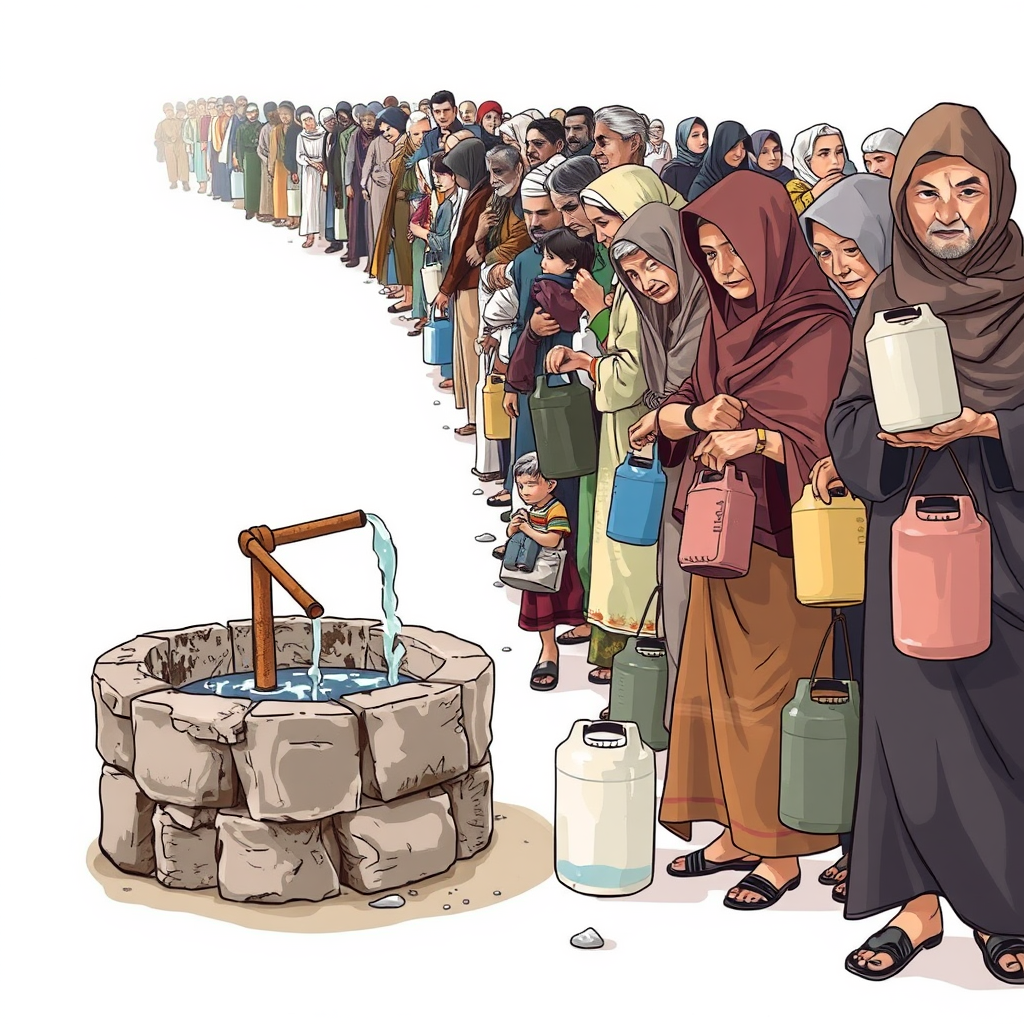Gaza's Water Crisis: Thirst Grips Territory

Gaza City residents are facing a deepening water crisis, with access to clean water dwindling rapidly following recent disruptions to supply lines and damage to infrastructure during intensified conflict. Hundreds of thousands have lost their primary source of water after Israel’s national water utility, Mekorot, had its pipeline servicing Gaza City cut off amidst renewed military operations.
The damage to the pipeline in the Shejaia neighborhood has forced residents to walk miles, often carrying containers, in search of limited water supplies from the few remaining functional wells. The situation is particularly dire given that Mekorot’s pipeline had been supplying 70% of Gaza City’s water, especially after years of conflict rendered most local wells unusable.
“Since morning, I have been waiting for water,” said Faten Nassar, a 42-year-old Gaza resident, reflecting the desperation felt by many. “There are no stations and no trucks coming. There is no water. The crossings are closed.”
Israel’s military has not yet publicly responded to requests for comment regarding the water supply disruptions. The offensive, which included ordering evacuations from Shejaia, is being conducted against what the military describes as “terror infrastructure.”
The crisis is unfolding against a backdrop of widespread displacement, with most of Gaza’s 2.3 million people internally displaced by the ongoing conflict. This has dramatically increased the demand for already scarce water resources. Residents report spending hours in queues, only to receive insufficient amounts for their daily needs.
“I walk long distances. I get tired. I am old, I’m not young to walk around every day to get water,” said 64-year-old Adel Al-Hourani, highlighting the physical toll on vulnerable populations.
The situation is exacerbated by the long-term degradation of Gaza’s water resources. The Coastal Aquifer Basin, the Strip’s only natural water source, is severely depleted and largely unfit for consumption due to salinity, over-extraction, and pollution. According to the Palestinian Water Authority, most wells are currently inoperable.
Recent data from the Palestinian Bureau of Statistics and the Water Authority indicates that over 85% of Gaza’s water and sanitation facilities are either completely or partially out of service. Furthermore, desalination plants, crucial for providing clean water, have been damaged or halted operations due to power and fuel cuts.
Currently, water supply rates have plummeted to an average of 3-5 liters per person per day – far below the 15 liters considered the minimum for survival in emergency situations, according to the World Health Organization.
This crisis isn’t simply a consequence of the current military actions; it’s a culmination of years of conflict, resource mismanagement, and limited access to essential infrastructure. While the immediate focus is on restoring water supplies, a long-term solution requires addressing the underlying issues of water scarcity, infrastructure repair, and sustainable water management practices. The current situation demands urgent humanitarian intervention and a commitment to ensuring access to clean water as a fundamental human right for the people of Gaza.